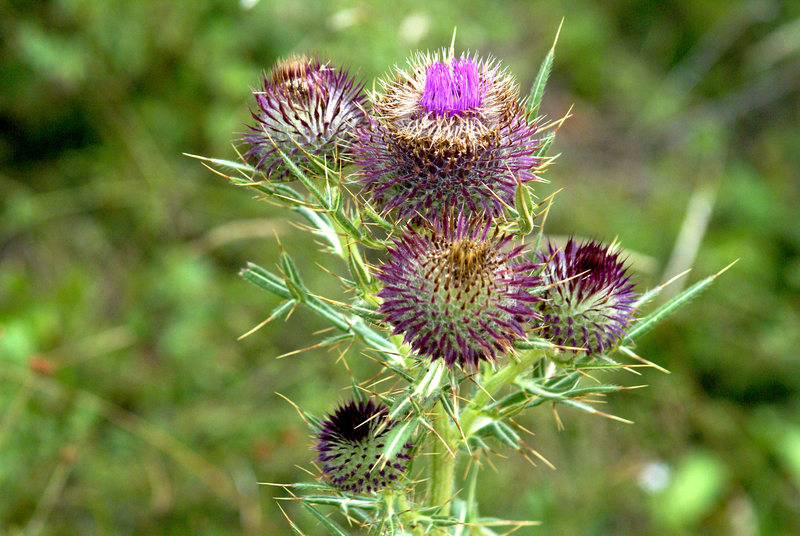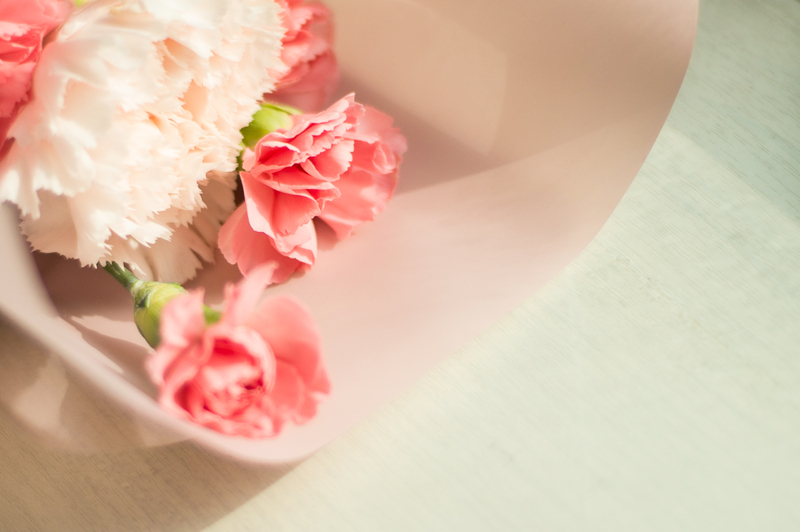Exploring the World of Container Gardening
Posted on 25/06/2025
Container gardening has surged in popularity as more people embrace urban living, seek sustainable gardening solutions, or simply want to add beauty and nature to small spaces. Whether you're a seasoned plant lover or a beginner looking to start your own green oasis, understanding the possibilities and strategies involved in container gardening can elevate your gardening journey. In this comprehensive guide, we will explore the diverse realm of container gardening, discuss its advantages, offer practical tips, and present design ideas to inspire your next project.
What is Container Gardening?
Container gardening is a versatile method of cultivating plants in vessels such as pots, tubs, baskets, or any receptacle that can hold soil and allow for drainage. From small balconies to sprawling backyards, container gardens provide the flexibility to grow flowers, vegetables, herbs, and even small trees, regardless of available ground space.
The Benefits of Container Gardening
- Space-Saving: Perfect for urban dwellers and those with limited outdoor areas.
- Mobility: Allows you to move plants according to light, weather, or design preferences.
- Soil Control: Offers more control over soil quality and drainage, reducing plant diseases.
- Accessibility: Excellent for people with mobility challenges, as containers can be elevated.
- Flexibility: Enables you to experiment with different plants, styles, and seasonal displays.
- Pest and Weed Reduction: Limits access for many common garden pests and weeds.

Getting Started with Container Gardening
Choosing the Right Container
The success of your container garden greatly depends on the type of receptacle you choose. Consider the following when selecting containers:
- Material: Options include terra cotta, plastic, ceramic, metal, and wood. Each has pros and cons regarding weight, insulation, and aesthetics.
- Size: The container must be large enough to accommodate root growth. Deeper pots are necessary for most vegetables and larger plants.
- Drainage: Ensure containers have drainage holes to prevent waterlogging, which can rot roots.
- Color: Lighter colors reflect heat and keep soil cooler, important for sunny locations.
Don't be afraid to get creative--repurposed items like barrels, buckets, and cans make unique and eco-friendly containers!
Selecting the Ideal Soil Mix
Using the right soil mix is vital for thriving container plants. Garden soil alone is not advised as it can compact and lacks proper drainage. Instead, opt for:
- Commercial Potting Mix: Designed to be lightweight, well-draining, and nutrient-rich.
- DIY Mix: Combine 50% peat moss or coir, 25% perlite or vermiculite for drainage, and 25% compost for nutrients.
- Organic amendments like worm castings or slow-release fertilizers can further boost growth.
The key is to ensure the soil mix remains moist but not soggy, and provides the roots with ample oxygen.
Best Plants for Container Gardening
The world of container plants is incredibly broad, with options for every taste and skill level. Here are some top choices:
Edible Container Gardening
- Herbs: Basil, parsley, cilantro, thyme, and chives thrive in pots.
- Vegetables: Tomatoes, peppers, lettuce, carrots, and radishes are container-friendly.
- Fruits: Strawberries, dwarf citrus trees, and blueberries can be grown in larger pots.
Tip: Use separate containers for more demanding crops to make fertilization and watering easier.
Ornamental Container Plants
- Annuals: Petunias, marigolds, geraniums, and impatiens offer instant color.
- Perennials: Hostas, daylilies, and heucheras provide long-lasting beauty.
- Foliage Plants: Ferns, coleus, and caladium are excellent for shady spots.
- Grasses and Succulents: Low-maintenance and striking in design-focused displays.
Combining Plants for Impact
For lush, eye-catching displays, follow the "thriller, filler, spiller" formula:
- Thriller: A tall or bold plant as the centerpiece (e.g., ornamental grasses or canna lilies).
- Filler: Mounding plants that add body (e.g., begonias, coleus).
- Spiller: Trailing plants that cascade over the sides (e.g., sweet potato vine, ivy).
Tips for Successful Container Gardening
Proper Watering Techniques
Container plants often require more frequent watering than those in the ground. Keep these strategies in mind:
- Check Moisture Daily: Feel the top inch of soil; if dry, it's time to water.
- Deep Watering: Water until it flows out of the drainage holes, promoting healthy roots.
- Consider Self-Watering Pots: These help maintain consistent moisture, especially in hot weather.
- Morning Watering: Minimizes evaporation loss and helps prevent diseases by allowing leaves to dry.
Fertilization and Feeding
Growth in containers exhausts nutrients faster, so feed your potted plants regularly:
- Slow-Release Fertilizer: Mix into the topsoil at planting for ongoing nutrition.
- Liquid Fertilizer: Apply diluted liquid feed during the growing season, especially for heavy feeders like tomatoes.
- Organic Options: Use compost tea, fish emulsion, or kelp extract for a natural boost.
Monitoring Light and Temperature
Plants in containers can be moved to optimize growth conditions:
- Sun Requirements: Match plant selection to available light--full sun, partial shade, or deep shade.
- Protection: Move fragile plants indoors or to sheltered spots during harsh weather.
- Rotating Plants: Ensures even growth and prevents one side from becoming leggy.
Pruning and Maintenance
Regular upkeep keeps container gardens vibrant:
- Deadhead Flowers: Remove spent blooms to encourage further flowering.
- Trim Overgrowth: Shape plants and prevent crowding.
- Inspect for Pests: Act early to control issues like aphids, spider mites, and fungus.
- Refresh Soil Annually: Top up or replace soil each spring for optimal growth.
Creative Design Ideas for Container Gardening
Container gardening offers endless design opportunities limited only by your imagination. Here are several ways to make your container garden a unique expression of your style:
Themed Containers
- Herb Garden: Plant a mix of kitchen herbs for culinary use and fragrance.
- Butterfly or Pollinator Garden: Use nectar-rich flowers to attract beneficial insects.
- Shade and Sun Collections: Combine plants with similar light needs for striking effect.
- Color Schemes: Use hues that harmonize with your home or create seasonal displays like spring pastels or autumn reds and oranges.
Vertical Container Gardening
Maximize limited spaces with vertical solutions:
- Stacked pots, hanging baskets, and wall-mounted planters.
- Use trellises or supports for vining plants like peas, beans, or ornamental sweet peas.
Repurposed and Upcycled Containers
- Transform old wheelbarrows, teapots, boots, or crates into funky planters.
- Drill drainage holes and ensure the container is clean and safe for plants.
Year-Round Container Gardening
Many believe container gardening is just for warm months, but with the right choices and strategies, you can enjoy beautiful pots year-round:
Seasonal Rotations
- Spring: Pansies, violas, tulips, and daffodils.
- Summer: Geraniums, zinnias, petunias, and salad greens.
- Autumn: Chrysanthemums, ornamental cabbages, and kale.
- Winter: Evergreen shrubs, holly, pansies, and winter heather.
Swap out tired plants or use bulbs for a continuous display of color and interest.
Overwintering and Protecting Containers
Protect perennials and tender plants in cold climates:
- Group pots together in sheltered spots for extra insulation.
- Use frost blankets, burlap, or move containers indoors until spring.
- Choose frost-resistant pots, like fiberglass or resin, to prevent cracking.

Common Challenges in Container Gardening and Solutions
While container gardening is rewarding, you may encounter some issues. Here's how to tackle frequent problems:
- Overwatering or Underwatering: Use pots with drainage and regularly check moisture levels with your finger or a moisture meter.
- Root Binding: If plants become root-bound, repot into a larger container or divide them.
- Nutrient Deficiency: Feed regularly and use high-quality potting soil.
- Pest Infestation: Inspect plants, use organic insecticidal soaps, and keep leaves dry when watering.
- Sunburn or Leaf Scorch: Move containers or provide shade during scorching afternoons.
Final Thoughts: Embracing the Art of Container Gardening
Container gardening is an empowering and enjoyable way to connect with nature, personalize your living spaces, and even grow your own food, regardless of space or experience. Whether you're adding a few pots of herbs on a windowsill or designing an elaborate patio display, the principles outlined above can help you create a thriving, beautiful container garden that reflects your style and meets your needs.
Dive into the world of container gardening--experiment, learn from your successes and failures, and most of all, savor the joy of nurturing life, one pot at a time!

